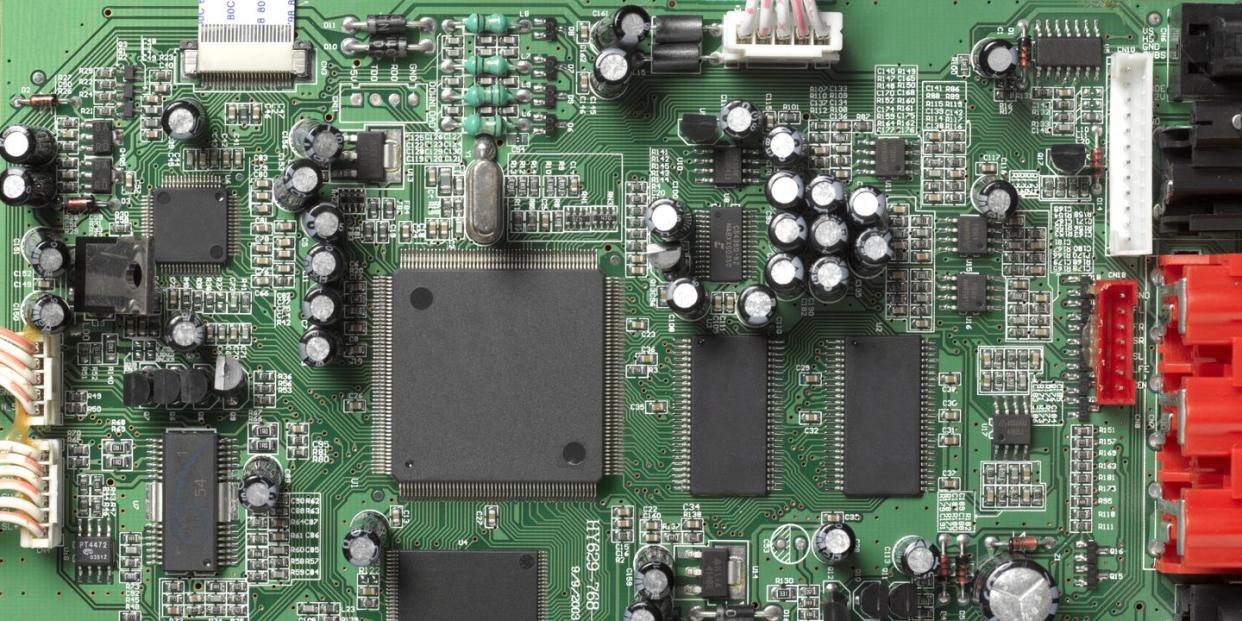An Analog—Yes, Analog—Computer May Crack the Greatest Unsolved Mysteries in Physics

"Hearst Magazines and Yahoo may earn commission or revenue on some items through these links."
Scientists built an analog quantum simulator that could answer important unsolved questions in the field of physics.
The quantum simulators are made up of hybrid metal-semiconductors on a nanoelectronic circuit.
Even the fastest digital computers can’t solve some pressing complex problems, including how to discover room temperature semiconducting materials. But these analog quantum simulators can.
We live in a digital age. Gone are the days of room-sized computers made from thousands of tubes or mechanical gears—and long gone are the ancient Roman days of the very first analog computers. But in the world of quantum computing, analog is alive and well. In fact, analog is one of the three major categories of quantum computers, and some of the world’s biggest companies have constructed analog creations.
But researchers from Stanford University and University College Dublin (UCD) developed a novel approach to constructing these machines by creating bespoke quantum computers with quantum components designed to solve specific questions. These aren’t room-sized machines like Charles Babbages’ 19th century creations; instead, they consist of hybrid metal-semiconductors on a nanoelectronic circuit. Essentially, the computers are measured in microns—not meters—and are called “quantum simulators.” A new paper published in in Nature Physics details the simulators in full.
“We’re always making mathematical models that we hope will capture the essence of phenomena we’re interested in,” Stanford researcher Goldhaber-Gordon said in a statement, “but even if we believe they’re correct, they’re often not solvable in a reasonable amount of time. [With a Quantum Simulator] we have these knobs to turn that no one’s ever had before.”
According to Goldhaber-Gordon, these analog devices create a “hardware analogy” to solve problems in quantum physics. To test the simulator, researchers used a simple circuit coupled together with two quantum components. Tuning electrical voltages, scientists created a state of matter called “Z3 parafermions,” which is when electrons have only one-third of their usual charge—the first time such a state was created on an electronic device in a lab. The idea is to scale up this simulator to solve more complex questions in quantum computing.
“Certain problems are simply too complex for even the fastest digital classical computers to solve,” Andrew Mitchell, director of the UCD Centre for Quantum Engineering, Science, and Technology (which only formed in 2021) said in a statement. “The accurate simulation of complex quantum materials such as the high-temperature superconductors is a really important example.”
Right now superconducting materials, the stuff that powers high speed trains and MRI machines, only work at extremely low temperatures. Using quantum simulators to discover room temperature superconducting materials would be a game-changer for the technology’s wider adoption. This is just one of the lingering questions the next generation of quantum simulators could help solve.
You Might Also Like
